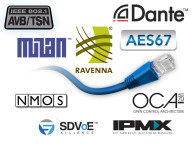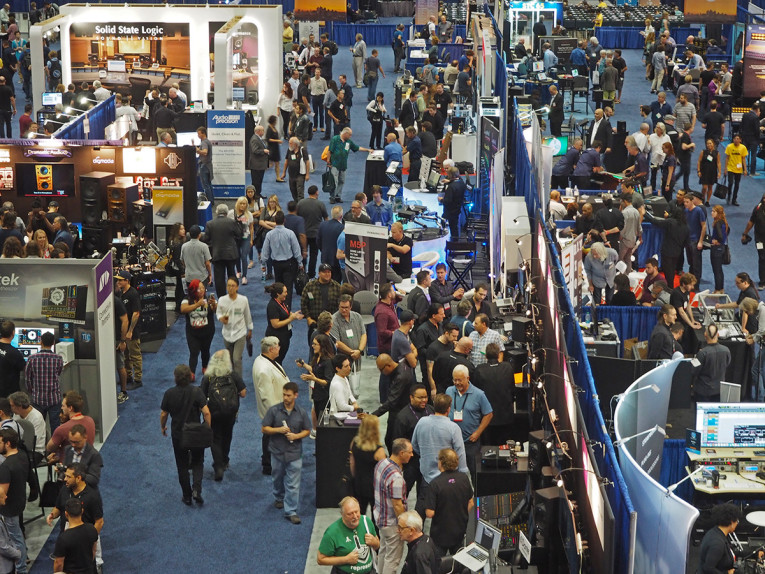
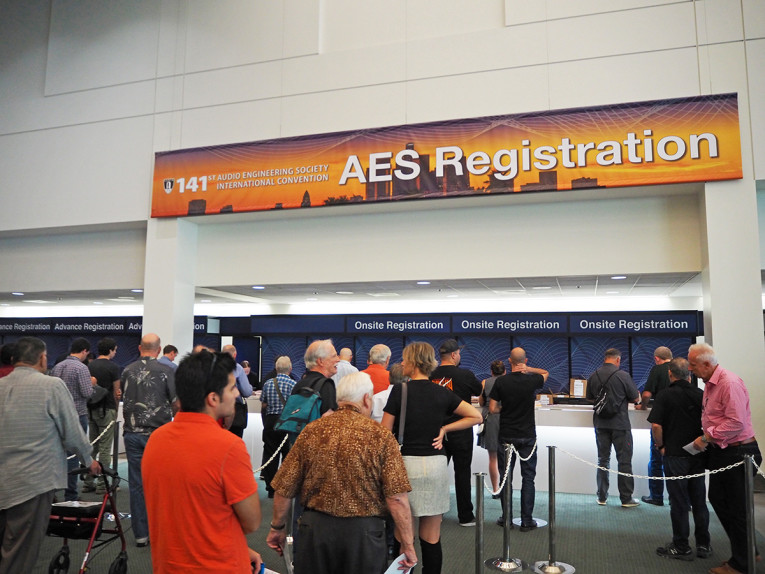
The main thing to criticize would be the fact that the show moved to the West Hall of the Los Angeles Convention Center and there was no external signage. Inside, although theoretically this should allow better access to the meeting rooms and the presentations, effectively it caused some dispersion of attendees looking for the sessions - also because of poor signage. The big advantage of the layout was the availability of excellent rooms for the exhibitors' demos - and there was much to see. In my opinion, it is also better to start the conference and events program one day before the opening of the exhibition - like in previous years - instead of extending the conference part one day after the exhibition is closed. This clearly generates a larger impact on the opening ceremonies.
That's precisely why the Opening Ceremonies, Awards, and Keynote Speech session this year had less people than at previous editions. And this deserves to be a solemn moment for everyone to participate - not to compete with concurrent sessions and the exhibition. I've noticed the same model is being considered for the 2017 AES Convention in New York and that should be reconsidered.
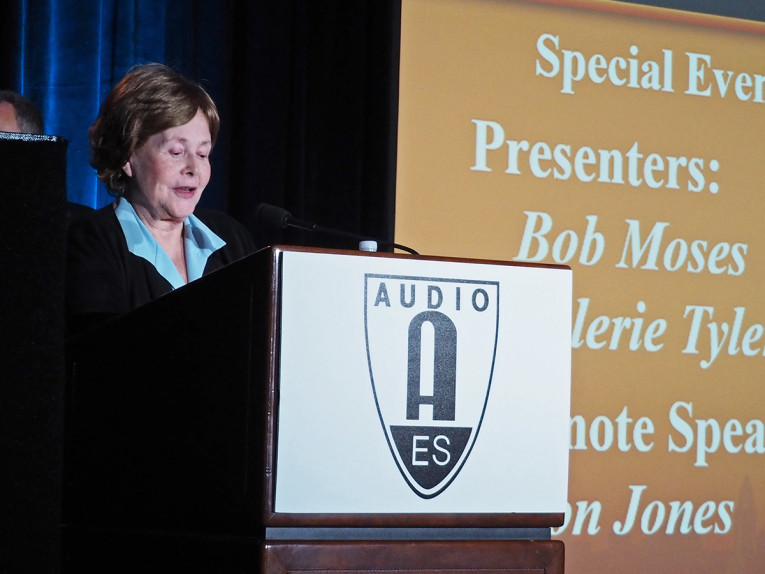
The AES Gold Medal Award (formerly The John H. Potts Memorial Award) is given in recognition of outstanding achievements, sustained over a period of years, in the field of Audio Engineering. This year it was also awarded to D.B. (Don) Keele, Jr. "for outstanding and significant research, design and product development, over a period of more than 45 years, of loudspeakers and loudspeakers systems providing broadband constant-coverage performance."
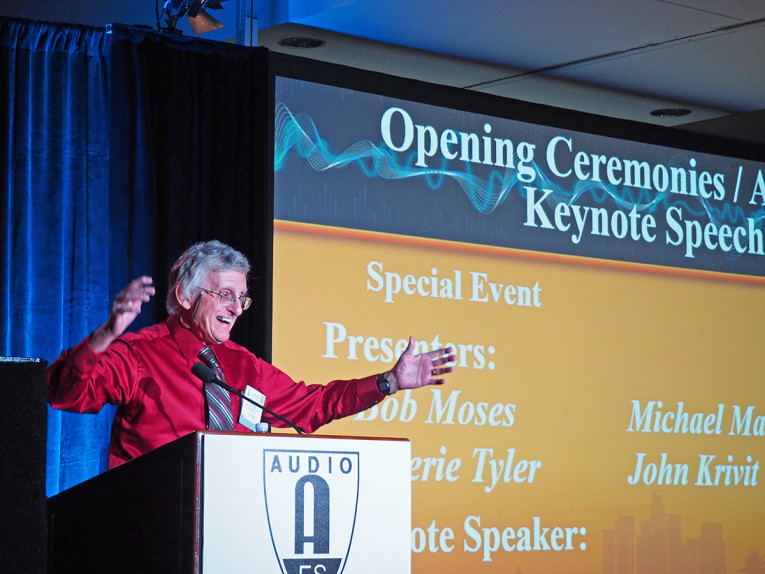
Don Keele has worked for a number of companies in the area of loudspeaker R&D and measurement technology including Electro-Voice, Klipsch, JBL, Crown, and Harman International. More recently, he worked for Harman/Becker Automotive Systems in the advanced technology development group and was a member of the Harman corporate acoustics engineering group working under Floyd Toole. Currently he heads his own consulting company DBK Associates and Labs. He holds eight patents with topics including "constant-directivity" loudspeaker horns, loudspeaker arrays, and signal processing. He is a fellow of AES and a member of ASA, received the TEF Richard C. Heyser Award in 2001. In 2002, he received a Scientific and Engineering Academy Award from the Academy of Motion Picture Arts and Sciences for work he did on cinema constant-directivity loudspeakers. More recently, in 2011, he received the ALMA Beryllium Driver Award for Lifetime Achievement.
Keele's passion for the last 15 years has been to promote the use of Constant Beamwidth Transducer (CBT) loudspeaker technology in the industry. He wrote 12 AES papers on this topic alone, and has presented and published more than 50 technical papers on loudspeaker design and measurement methods and other related topics. At this year's AES convention he presented three more papers on Spatial Audio, Transducers, and an Introduction to CBT Loudspeaker Arrays. As he stated on receiving the AES Gold Medal, he simply loves writing papers and sharing his research.
Full-Circle for AoIP
Another major highlight for this 141st AES convention was the focus on the Media Networking Alliance (MNA) and the Open Control Architecture (OCA) Alliance booths. Specifically, Archwave and Bosch promoted the first demonstration of an AES67 and AES70 integrated platform for audio, control, and connection management. In this case, using AES67, a RAVENNA equipment was passing audio to a Dante device, while AES70 provided the connection management.
As audioXpress details in a dedicated post, this was an historical moment, when audio networking technology goes full circle and gains a new level of coherence. Working together with Bosch, Archwave integrated two existing audio industry standards into a full-fledged solution for audio networking. This level of integration was achieved with Archwave's AudioLAN 2.0 technology, combining AES67 and AES70 into one coherent solution. As they explain, "Not just two separate streams of data, one for audio and one for control. The AES70 element actually controls what the AES67 streams are doing. In addition AES70 allows remote control of equipment."
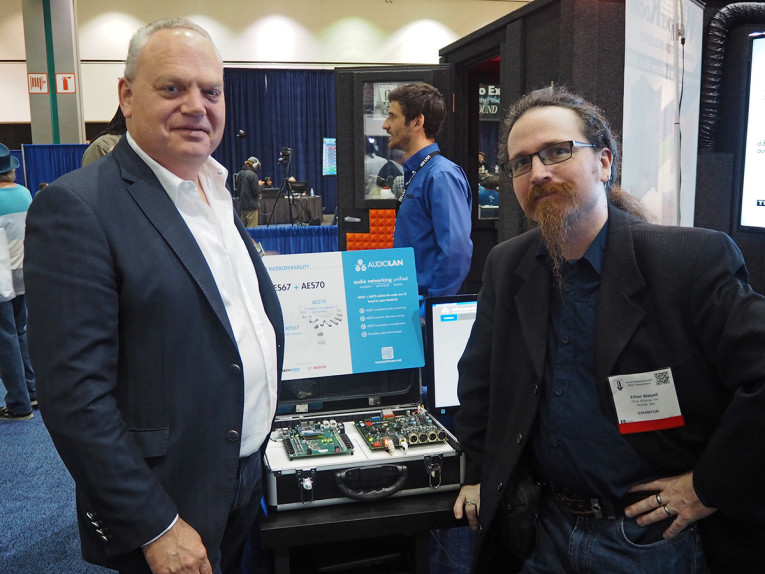
Even though few attendees probably noticed the demonstration at the show, its importance is more emphasized by the fact that the studio and the recording community is clearly embracing audio networking - as it was demonstrated at this AES convention. Focusrite, Solid State Logic, and Waves are some companies that are creating very powerful multichannel networked solutions. In Solid State Logic's case, reaching from project studio contained solutions, all the way up to the most sophisticated broadcast systems, all based on Dante.
At the 2016 AES show, even Apogee Electronics announced a Dante network option card for its flagship audio interface Symphony I/O Mk II, expanding its connectivity options, which currently include Thunderbolt, Pro Tools HD, and Waves SoundGrid. And, Focusrite made clear that its expanding RedNet Dante range of products is targeting new application levels, from studio to live recording, post-production and broadcasting, now supporting even larger multichannel configurations. Focusrite's level of integration, underlining the advantages of networked audio systems over the adopted protocol (Audinate's Dante) and making configuration and operation straightforward, is an excellent example of marketing excellence combined with great engineering. aX
This article was originally published in The Audio Voice newsletter, (#101), October 6, 2016.





